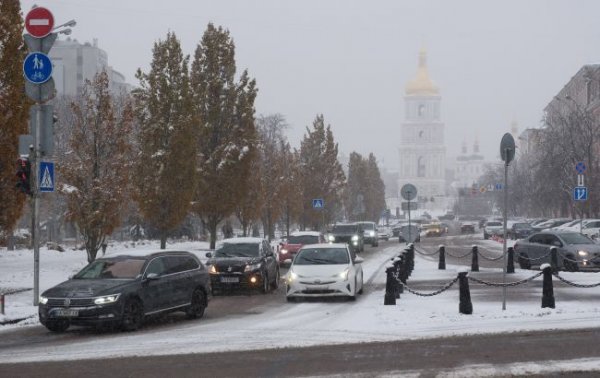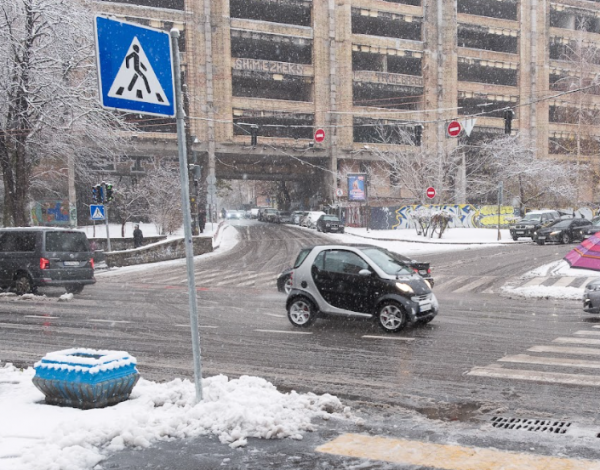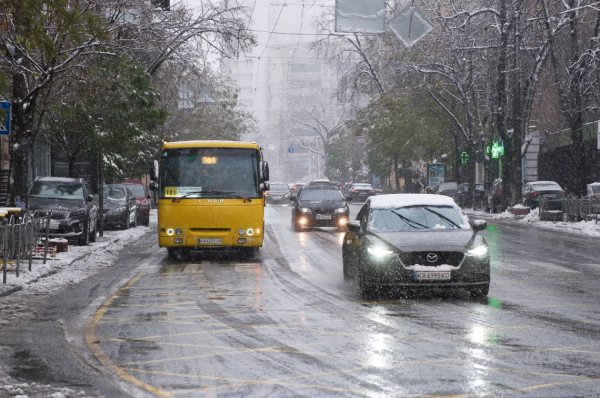
Photo: To change tires on a car in April or not (Vitaliy Nosach, RBC-Ukraine) Author: Konstantin Shirokun
During the first days of April, drivers and pedestrians managed to get used to the warmth, but we have a surprise: in the coming days, forecasters promise the return of frosts and rain with snow. RBC-Ukraine Auto journalists tell what drivers should do with changing tires in such instability.
Read about what drivers should do – change tires on their cars in April or not, in the article by RBC-Ukraine
Of course, under such conditions it is better to postpone changing to “summer” tires: no matter what the calendar shows, the temperature is below zero and precipitation in the form of snow is definitely winter.

When should you change your tires?
Let us recall that the working temperature range for summer tires ends at +7…+8 degrees – and the reign of winter tires begins at the same boundary. But global warming is progressing, and meteorologists note that the transition period of seasons stretches out for almost a month. For example, during the day it can be up to +15…+20 degrees, but at night it is +5…+7 degrees, and then we have a “rollback” for a whole week to a specific “minus”.
How should responsible drivers act against the backdrop of such a struggle between winter and summer, wanting maximum safety for themselves and their passengers? Firstly, they have to focus not only on the above-mentioned temperature limit, but, for example, on the conditions under which a particular car is most often driven.
For example, if all trips take place during the day, when it is literally warm outside, you can mount summer tires on your car earlier, without waiting until the warm weather finally sets in. And you don't have to rush to change tires when the car, for example, takes its owner to work every day, leaving the road early in the morning and returning late in the evening – that is, also on cold asphalt.
However, most Ukrainian drivers cannot so clearly tie their trips to the time of day, so tire experts offer another, more universal recipe.
Universal recipe for changing tires
The short answer to the question “What will happen if the car has tires that are not appropriate for the season?” is that the car will have worse grip on the road. And this will happen even if there is no snow or ice on the road. Because the rubber compound of the tread and its pattern for each seasonal type of tire are adapted to the corresponding temperature.
And here there is one important nuance: summer tires do not forgive the driver for violating the seasonality, and winter tires are more lenient in this regard. That is, summer tires behave much worse in winter conditions than winter tires – on warm asphalt. And therefore, with the current changeable spring, it is better not to change tires for a longer time – it will be safer.

Winter tires on warm roads
And yet it is worth remembering that winter tires are not ideal on warm asphalt either. If you drive calmly, without intensive braking and abrupt steering wheel movements at speed, the violation of the tire seasonality rule will not be noticeable. But in an extreme situation, it will suddenly turn out that the car does not obey the steering wheel clearly and brakes worse than usual.
Therefore, the instruction for a driver with winter tires on a warm day is simple: drive the car in such a way as to avoid emergency situations. By the way, there is nothing new here, because during the winter season you should always drive like this.
Short
So, once again: it is better to have winter tires on a warm road than summer tires in the cold. And especially when the frost has returned not alone, but with snow and ice. And just as in the spring you should not rush to change tires, you should not prematurely switch from a winter to a summer model of behavior in your driving manners.
In preparing this article, materials from AutoBild , Nokian Tyres and Rosava were used.
Let us recall that RBC-Ukraine recently reported on the types of all-wheel drive available on pickups and SUVs.
